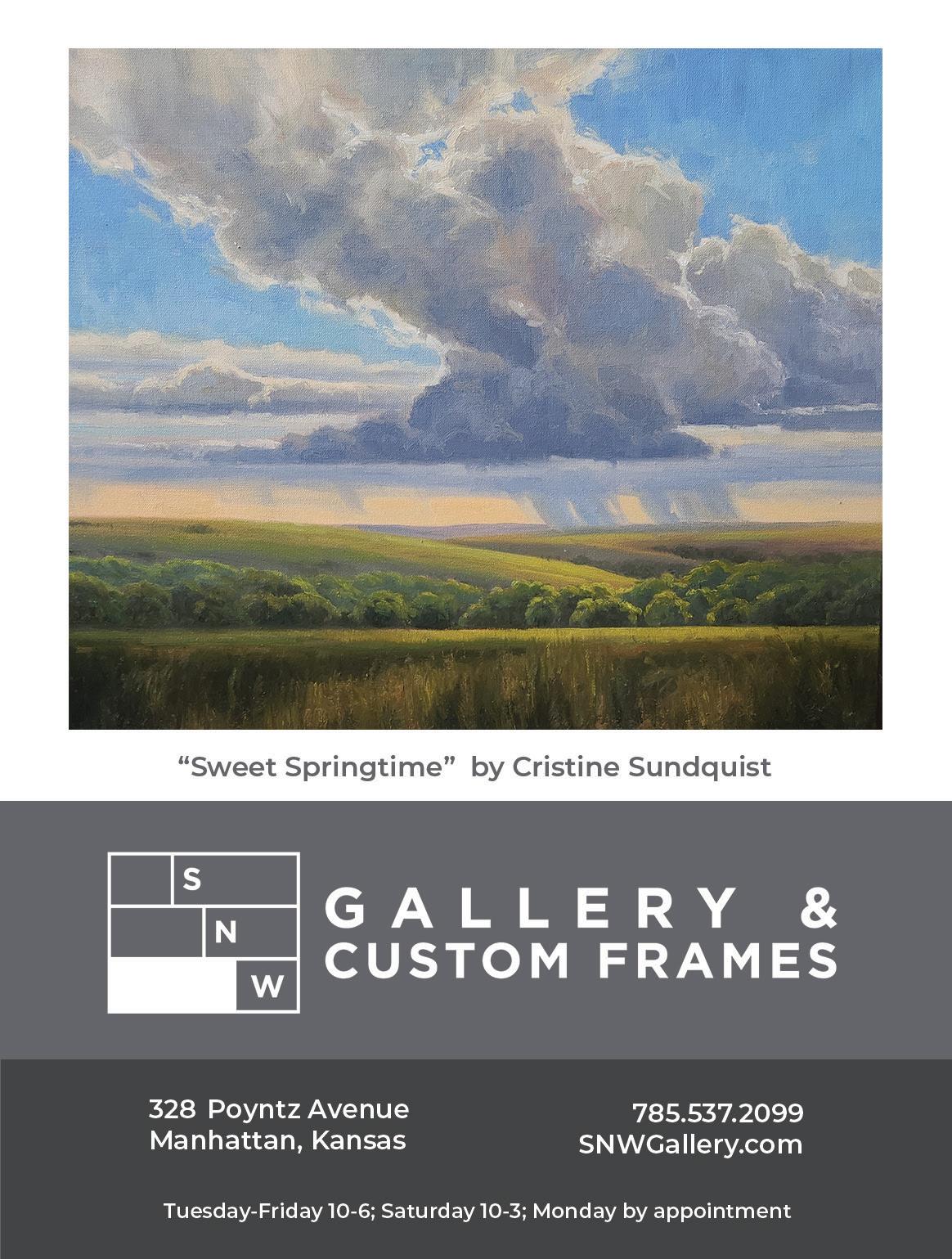

Artist breathes life into centuries-old art form
Beloved bookstore here to stay • K-State Gardens prepares for 150th anniversary • New entertainment venue offers indoor mini golf, food and drink also in this issue

















Artist breathes life into centuries-old art form
Beloved bookstore here to stay • K-State Gardens prepares for 150th anniversary • New entertainment venue offers indoor mini golf, food and drink also in this issue














EDITOR
Kalli Jo Smith
ART DIRECTOR/ DESIGNER
Alex Tatro
COPY EDITOR
Leslie Clugston Andres
ADVERTISING AND MARKETING
Angie Taylor | (785) 832-7236 ataylor@sunflowerpub.com
CONTRIBUTING PHOTOGRAPHERS
Dave Mayes
Sammy Kopecky
Michael Henry
Amy Meng
CONTRIBUTING WRITERS
Debbie Leckron Miller
Bethaney Phillips
Lucas Shivers
PUBLISHER
Bill Uhler
DIRECTOR
Bob Cucciniello
SUBSCRIPTIONS
$25 (tax included) for a one-year subscription to Manhattan Magazine
CONTACT US
Manhattan Magazine
1503 SW 42nd St | Topeka, KS 66609 (800) 578-8748 | Fax (785) 843-1922 Or email comments to manhattanmagazine@sunflowerpub.com
Manhattan Magazine is a publication of Sunflower Publishing, a division of Ogden Publications, Inc. sunflowerpub.com
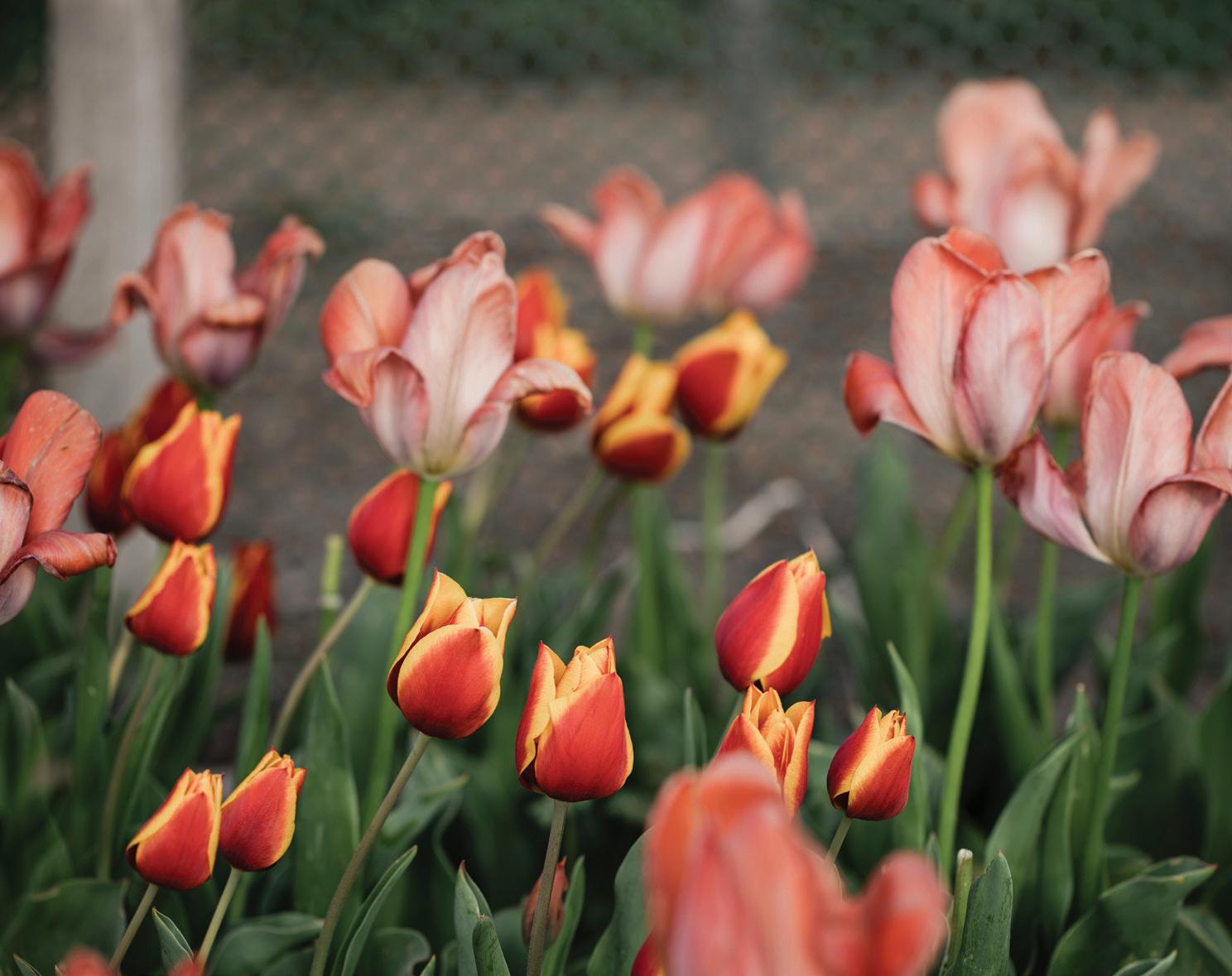
Welcome to the summer and fall 2024 edition of Manhattan Magazine.
As a steady and thoughtful contributor to this community, we here at Manhattan Magazine take pride in bringing you a biannual publication packed with nods to local businesses, arts, events and more.
In this issue’s department sections, learn about what K-State Gardens is doing to prepare for their 150th anniversary in 2025, talk with The Dusty Bookshelf owners about the future of the beloved bookstore, and explore Sinkers Lounge, a new entertainment venue offering indoor golf and more.
In our feature story, meet Brianna Sprague, a local artist who has breathed life into a centuries-old art form.
I’m thrilled to bring you another issue that highlights so many different businesses, organizations and people. We hope to be back with more stories to tell.
All the best, Kalli, Editor
Bookshop here to stay after recent closure concerns
The Gardens at Kansas State University gear up to celebrate 150th anniversary
New entertainment venue offers custom take on indoor golf, food and drinks
25
Summer and fall events are back
Artist keeps historic art form alive with fore-edge painting


ON THE COVER


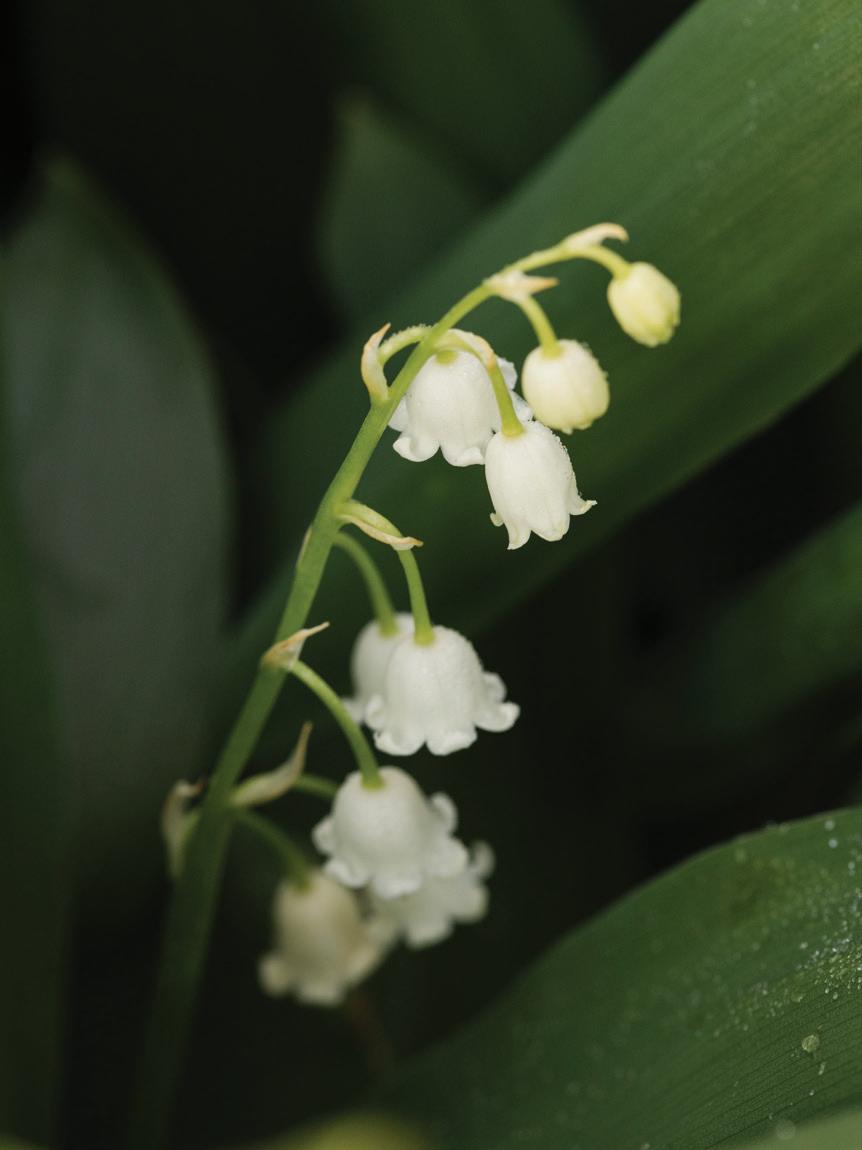





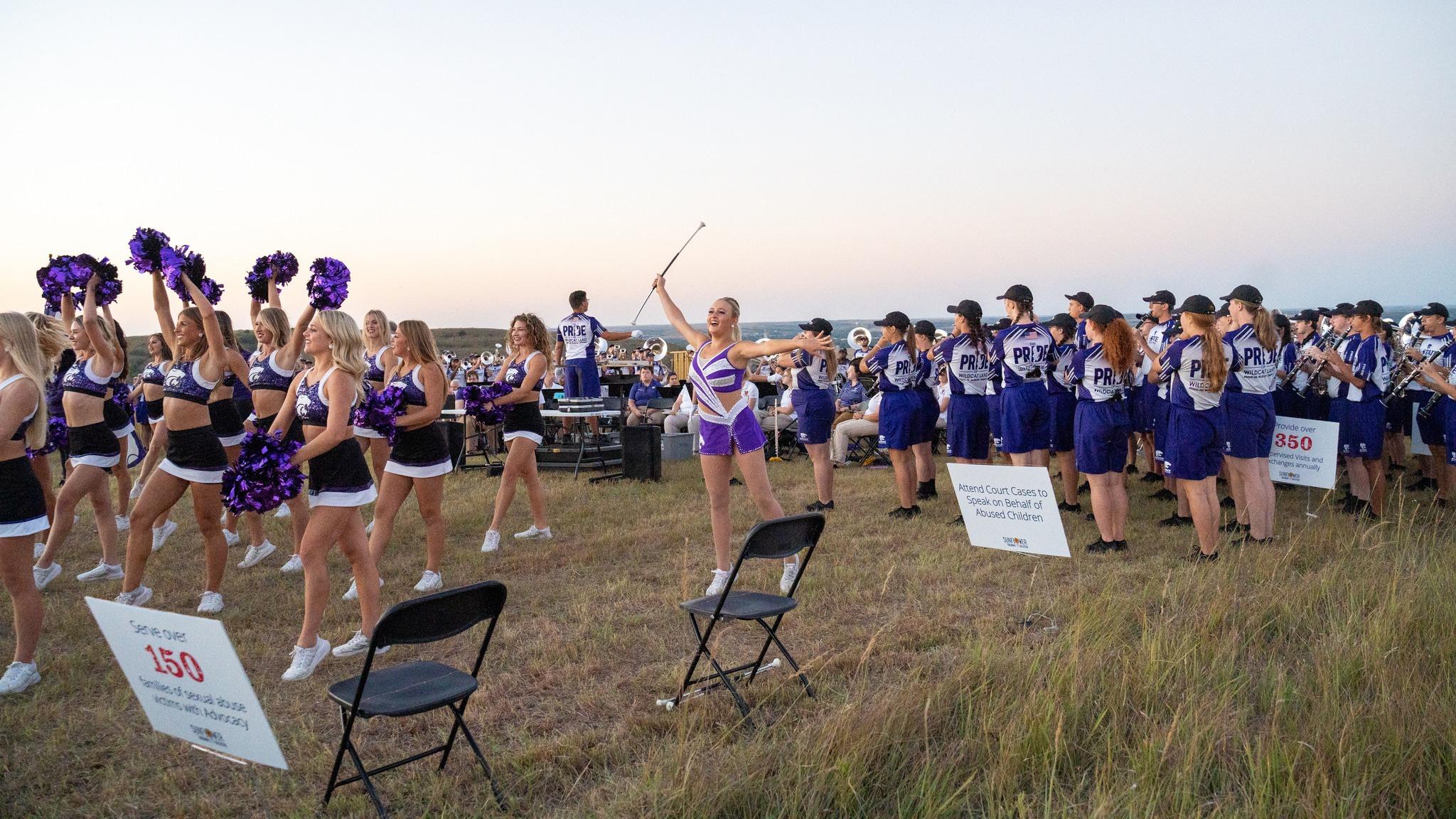


he Dusty Bookshelf continues to thrive and support Manhattan’s literary community, staying in business after rent concerns in July 2023.
“We’re just feeling overjoyed to still be here,” says owner Diane Meredith. “There’s great energy and lots of hope for the future of Dusty. No guarantees, but things feel so much better.”
Originally opened in 1985, Dusty overcame rent increases this past summer and secured a new lease with hopes to stay long-term at 700 N. Manhattan Avenue.
“As always, we’re so grateful,” Meredith says. “We’ll continue to do our best to take care of this space and provide a place for this community.”
To say the beloved bookstore has had to overcome obstacles over the past several years would be an understatement.
Dusty recovered from a fire during renovations on March 2, 2017, and reopened in 2019. The business also endured major Aggieville construction and the Covid-19 pandemic—all thanks to consistent community support.
“We need bigger words than just, ‘thank you!’ It’s just not enough,” says new general manager Tracy Emery. “This community cares for us, and we for them. It’s beautiful.”
Aggieville has loved and supported this bookstore at the corner of Manhattan and Moro for more than a century.
“With this town, I’m not surprised at all because Manhattan has been so generous in so many ways,” Meredith says. “It’s amazing and motivating.”
Business spiked in the fall after announcing the plans to stay open, and it’s remained steady this spring
“With the new free weekday parking in the Aggieville garage, we anticipate an increased flow of townies. We’ve been missing many of them and are excited to have them come back to the district,” says Meredith.




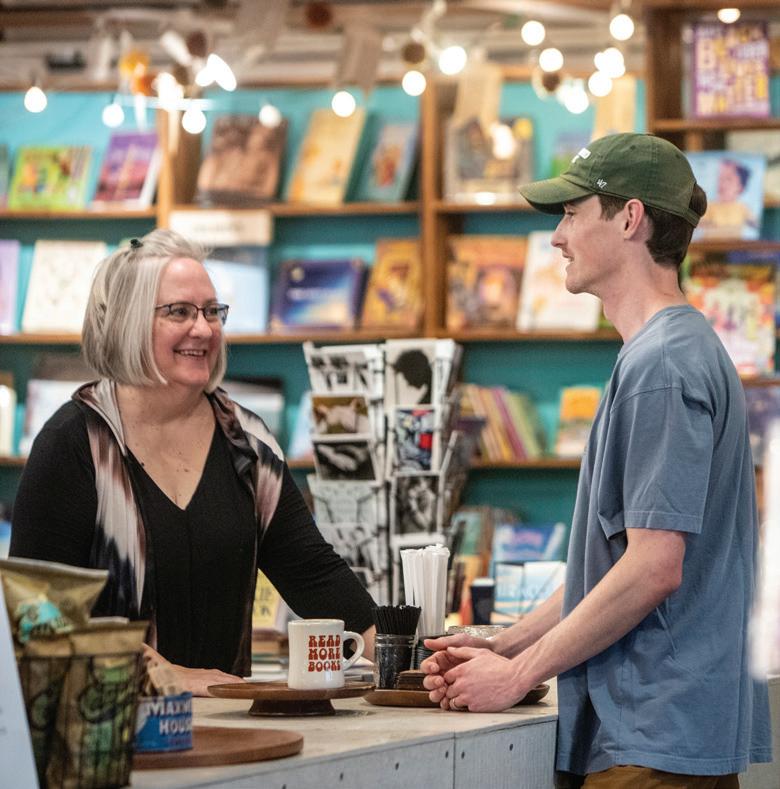
Exploring new potential
“It all hinges around putting systems in place to stay organized and building each section of the store, bringing in more new books, more merchandise, more events, and, as always, great used books,” Meredith says. “Having Tracy here—with her experience—is going to allow us to do this and grow.”
Emery, a resident since 1988, found solace in the bookstore early on. “Dusty is one of the first places my roommates brought me. The idea of working here now is a decades-long dream come true,” Emery says. “Aside from my home and my church, Dusty is my favorite place in town.”
Before serving as manager, Emery was a coordinator for the USD 383 FIT Closet & Clothing Exchange.
“It might sound a little woo-woo, but I was in the store one day back in March and felt a sense that I should approach Diane to ask about the possibility of needing someone at Dusty with my talent mix,” Emery says. “She asked, ‘Are you serious? How serious?’ I replied that I was 90% serious. We continued the conversation and decided it would be a great next step for all.”
Emery says she hopes to connect kindred spirits in our community with books that bring them wisdom and joy.
“We want to create an even more welcoming space and lean into hospitality to meet the needs of those who walk in our doors,” she says.
And for those worried about losing this iconic shop in town, rest assured The Dusty Bookshelf is here to stay.
Bottom: General manager, Tracy Emery, helps a customer with their shopping.


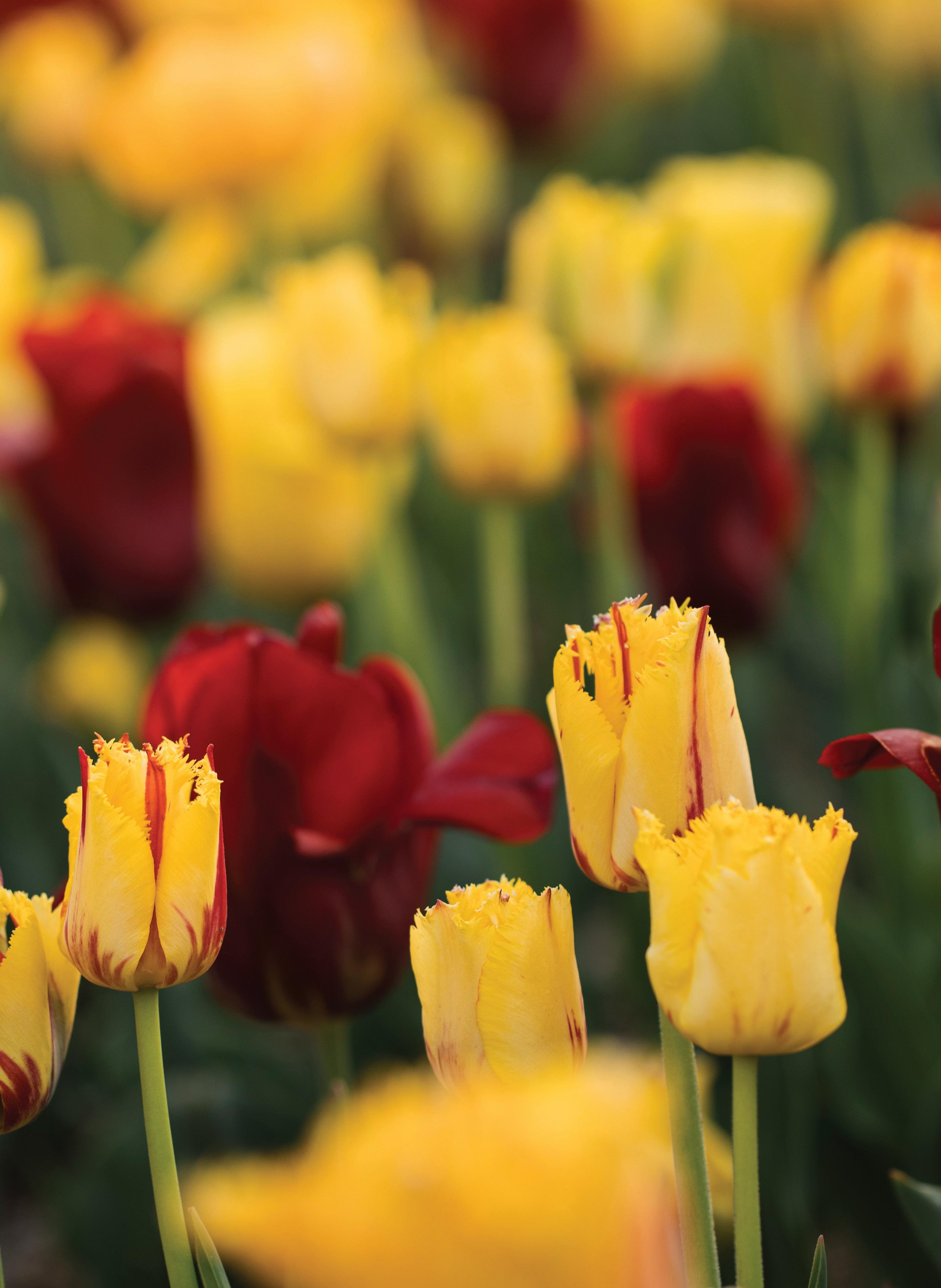
The Gardens at Kansas State University gear up to celebrate 150th anniversary
Tiptoe through the tulips and flutter with butterflies all season long at the campus’s most colorful classroom and public showplace, the Gardens at Kansas State University. Here, benches replace desks, limestone outcroppings create walls and water fountains are the spouting type. But mostly, a lush carpet of grasses, flowers and natural areas make it an idyllic escape surprisingly close to the bustling central campus.
“So many people don’t know we’re tucked away here. And, when they do discover us, it’s ‘Wow, I had no idea!’” says Scott McElwain, gardens director.
He’s quick to point out that the gardens are free and open to the public March through November, dawn to 10 p.m.
“For anyone with an interest in landscape gardening, or who’s simply looking for a respite, we invite them to visit this bit of a sanctuary away from hectic daily life,” McElwain says.
Celebrating its 150th anniversary in 2025, the K-State Gardens started out in what’s now the heart of campus. The Kansas State Agricultural College purchased a farmstead there in 1871 that included a plant nursery and quickly became the University Gardens. But construction of Justin and Bluemont Halls and other growth squeezed out the gardens in 1978, relocating them and their 1907 Victorian-style conservatory to the university’s dairy barn complex on Denison Avenue (just south of the College of Veterinary Medicine).
Despite the uprooting, The Gardens at K-State have remained true to their founding purpose—as a hands-on learning laboratory for horticulture students and a showy resource for the public. McElwain took over as director in 1997 and guided the transformation from an informal to a formal garden and added an irrigation system, paved walkways, fountains, sculptures and plantings he hand-selects.

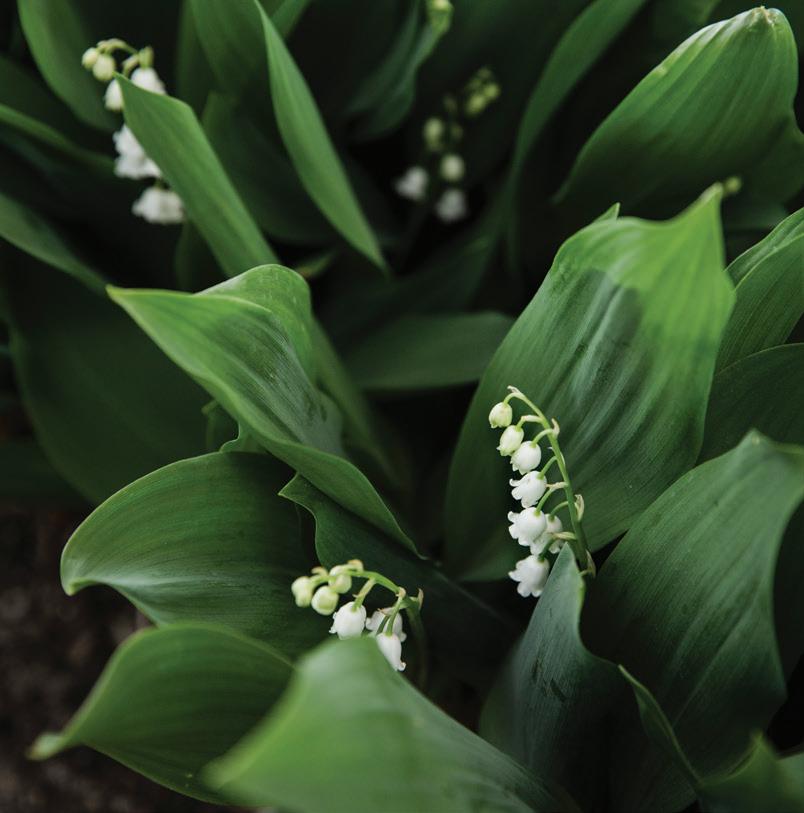
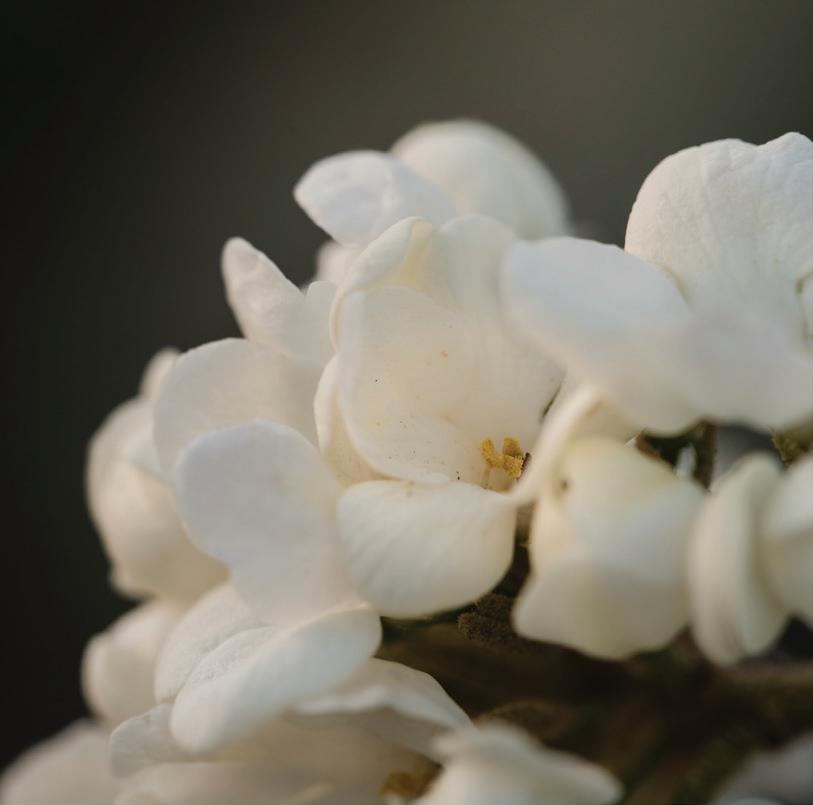
“My goal is to make sure we’re providing a world-class display and educational garden for our students and the public, and at the same time, keeping it free admission for all,” he explains.
Although milk cows no longer graze these manicured lawns, the striking 1930s limestone dairy barn and adjoining caretaker’s cottage have new purpose. Once a milk room and lodging for the caretaker and students who milked the cows, the cottage today serves as the Visitor Center and starting point for a stroll.
The center’s large-screen digital display showcases each area of the gardens in peak bloom, plus there are history exhibits, a master plan and self-guided tour brochures to steer you down the paths. Just outside the dairy door, the Cottage Garden rambles, with herbs, vegetables, fruits and flowers. A dazzling display of 10,000 tulips starts off springtime, later replaced by another 10,000 bedding plants in summer.
Circle the centerpiece fountain, past the wisteria-draped pergola, to the Native Garden. Life-size wildcat sculptures crouched on the native limestone ledges oversee the flowers and grasses that mimic natural areas in Kansas. Also in the Visitor Center specialty beds, the Butterfly Garden flutters to life from summer through fall with nectar and habitat for native butterflies.
A shady walkway leads under a majestic American elm tree to the rose collection and its counterparts: the iris, peony and daylily collections that surround the handsome hub, a tiered 13-foot-tall cast-iron fountain and octagon pool. Some 180 rose plants take turns blossoming from May through September in their rosy nook, and starting in springtime, iris and peonies perfume the grounds. Hundreds of varieties of iris include mostly tall bearded, but also some dwarf and Siberian types, and 150 varieties of tree and herbaceous peonies create a brilliant bouquet of all shapes, scents and colors. Daylilies bloom in June and July, but each bloom only lasts one day—thus the name—so the show changes daily.
Nighttime and its landscape lighting give another perspective.
“It’s a totally different garden at night, with the fountains, sculptures, pools and plants lit up,” McElwain adds.
Chances are, during a walk through the grounds, you’ll run across McElwain or his valued volunteers as they plant, weed, give tours (by appointment) and run the Visitor Center. McElwain credits his core of 50 volunteers for maintaining the flourishing oasis. “Without their support, we certainly wouldn’t be able to provide the experience we offer,” he says.
You’ll find Sue White, a volunteer for nearly 10 years, greeting guests in the Visitor Center, working on the newsletter, training tour guides and “whatever else they ask me to do,” she explains. When she’s off-duty, she has her favorite spots. “I’m particularly fond of the Cottage Garden— first, I like its name and also that it changes throughout



“My goal is to make sure we’re
providing a world-class display and educational garden for our students and the public, and at the same time, keeping it free admission for all.”
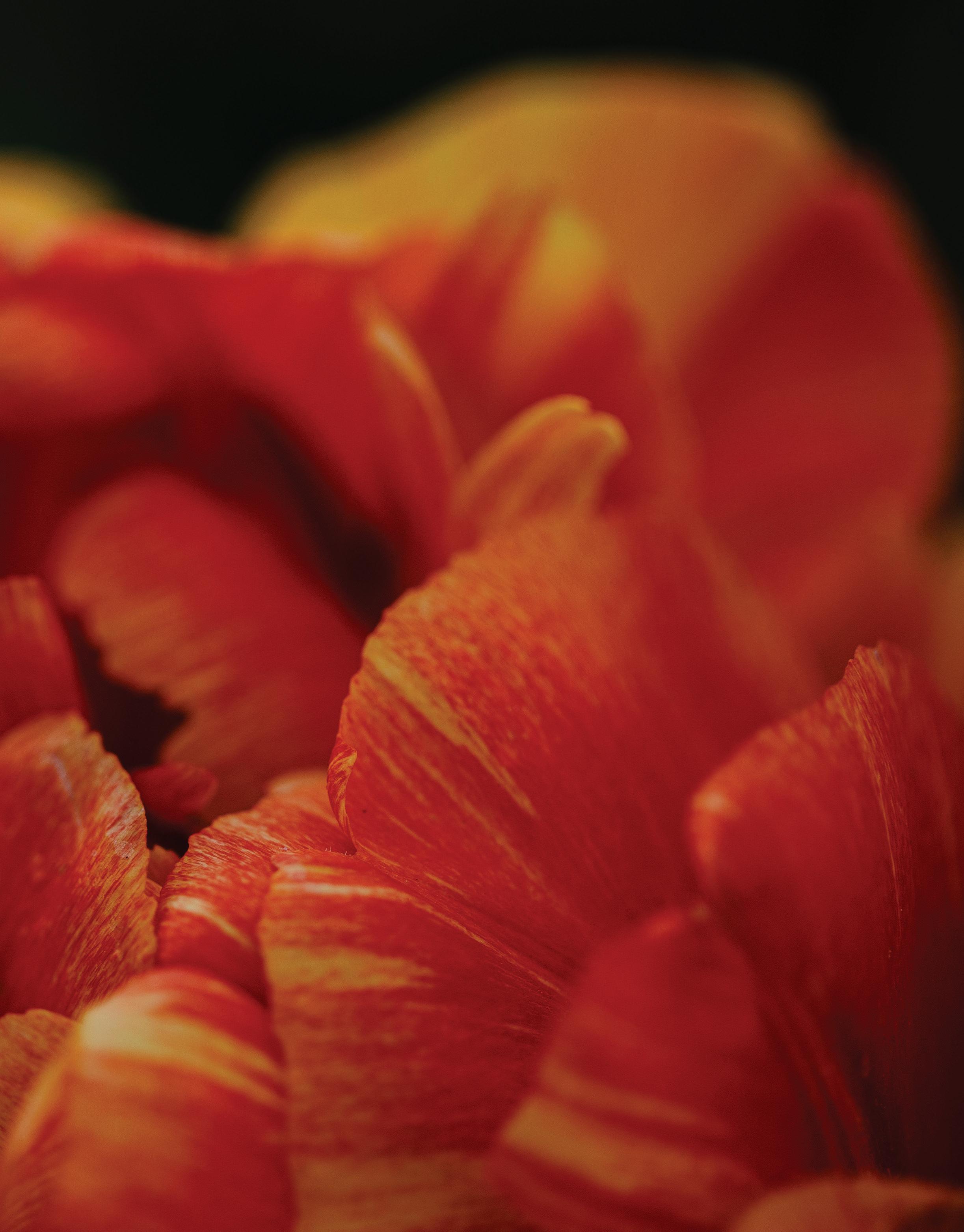
the year,” White says. The daylilies also catch her eye: “They’re my favorite—beautiful and easy to grow. Some have great names, too, like the bright-orange Primal Scream!” She loves to point out the native bird sculptures tucked in the beds and the heron in the pool.
Throughout the grounds, memorial sculptures, fountains, benches and plantings pay tribute to individuals whose families have donated in their memories. When volunteer Wally Wasser isn’t pulling weeds, pruning shrubs and deadheading daylilies, he’s pausing on his favorite memorial bench seated beside the “Serenity” statue, watching the busy bees and butterflies. “The Gardens are a great way to reconnect with nature,” Wasser says. “There is so much beauty, and things are constantly changing.”
Limited state funds, along with memorials, endowments and annual Friends of the Gardens fundraisers help sustain operations and student programs. An annual fundraising highlight, the Garden Party (June 7 this year), features an evening of live music, dinner and silent auction. Other annual events include a 5K Run for the Roses (April), and tulip bulb (May) and iris (July) sales.
Although the historic 1907 conservatory is missing from today’s landscape—removed due to disrepair in 2023—recent fundraising has focused on a new largescale reflection pool being built in the Conservatory Garden. The striking three-pool structure is a nod to a reflection pool in the original central-campus gardens.
“An element of the old is finally being brought back to the new,” says McElwain about the project, expected to be completed by fall. “It’s very appropriate that we are finishing the reflecting pool as we celebrate 150 years—a time to reflect on our past and future.”
The 150th year kicks off with a celebration in January 2025 and continues with a special event every month. “I’m looking forward to showcasing all the things we’ve accomplished and talking about our future,” McElwain says.
And as for those who haven’t yet discovered The Gardens, “I recommend they take the time to see what we have to offer. For everyone who does visit here, it puts them in a better place.”
















New entertainment venue offers custom take on indoor golf, food and drinks



Indoor golf takes a new approach with Sinkers Lounge located at 100 Manhattan Town Center. The recently opened venue and second Sinkers location (the flagship is in Kansas City, Missouri) features a unique take on the beloved game due to its limited space, says CEO Matthew Baysinger.
Those wanting to tee off in a more relaxed setting can look forward to two bars and nine mini golf holes featuring unique obstacles and out-of-the-box themes. It also has 18 table top golf holes—a game featuring a combination of shuffleboard and mini golf.
“You won’t find anything like it anywhere,” he says. “We’re not the first group to do mini golf in Manhattan, but I think we’re the first group to do it like this.”
What the space lacks in room, it makes up for in fun features. Sinkers’ parent company, Swell Spark, has brands like escape rooms, axe throwing, and other interactive entertainment.
The new entertainment space allows those with varying golf experiences to enjoy the game. With custom holes fabricated in-house by Swell Spark’s Sandbox department, guests can enjoy an entirely new experience.
Sinkers Lounge offers tables and booths throughout the course. Baysinger says the seating allows guests to take their snacks and beverages with them, whether it’s adults on a date, a family with all the kids, or college kids on a night out.
“It’s the opportunity to play mini golf in a place that’s more conducive to eating and drinking,” he adds.
What also makes the location unique is the guests’ ability to play the course again and again without an added fee.
“Once you pay, you can play as many rounds as you like,” says location manager Kareem Tippin. “I really like the replay ability of the different holes because you can always play better or try to; it’s not always easy, so you have lots of reasons to keep trying.”
Tippin says the most he has seen a single group play is six rounds of 18 holes.
Unlimited golf is $20 for adults and $11 for kids 12 and under; those five and under are free before 6 p.m. Separate pricing is available for single rounds. Tippin adds that the most popular holes are a combination of tabletop and putt. He says the hybrids are what guests get the most excited about.

“What we really look to do with Sinkers is take the nostalgic mini-golf from our childhood and add adult flavor.”

“The really popular one is similar to Skee-Ball, but it’s putt-putt put into it. There are traditional obstacles, but there are a few holes with more elements. Those are definitely the most fun,” he says.
The location also hosts a 3,000-square-foot lounge upstairs where guests can hang out after their rounds, or for an alternate bar location. Menu options include sliders, different dressed-up hot dogs, flatbreads, and desserts. They also serve appetizers that are a slight variation on classics, such as tatchos, pickle fries, or jalapeño-stuffed pretzel bites. A full bar selection helps round out offerings for those to socialize, golf, and everything in between.
The lounge offers an upscale feel, Tippin says, that’s perfect for hanging out. The lounge is open only during weekends/evenings, but they hope to expand the hours as popularity grows. Golf is open Monday through Wednesday, from 4 p.m. to 10 p.m., and on Thursday until 11 p.m. Friday and Saturday, the venue is open noon to midnight. On Sundays, it’s open from noon to 8 p.m.
For those interested in bringing the kiddos, Tippin says Sinkers caters to families with kids of all ages, but after 8 p.m., the venue is for adults only.
Reservations aren’t required but recommended during peak hours, specifically weekend evenings, Tippin says.
“What we really look to do with Sinkers is take the nostalgic mini-golf from our childhood and add adult flavor,” he says. “It really is the best of both.”
Sinkers’ first location is in Kansas City’s Power & Light District, and a third stop is planned for Lawrence.
Baysinger says the idea was to create a space that not only was fun but also worked well in a college town.
“I grew up in a college town, and I love college towns. There’s a real opportunity to provide fun entertainment and something that’s unique and different,” he says. “And that’s what we get to do here in Manhattan.”






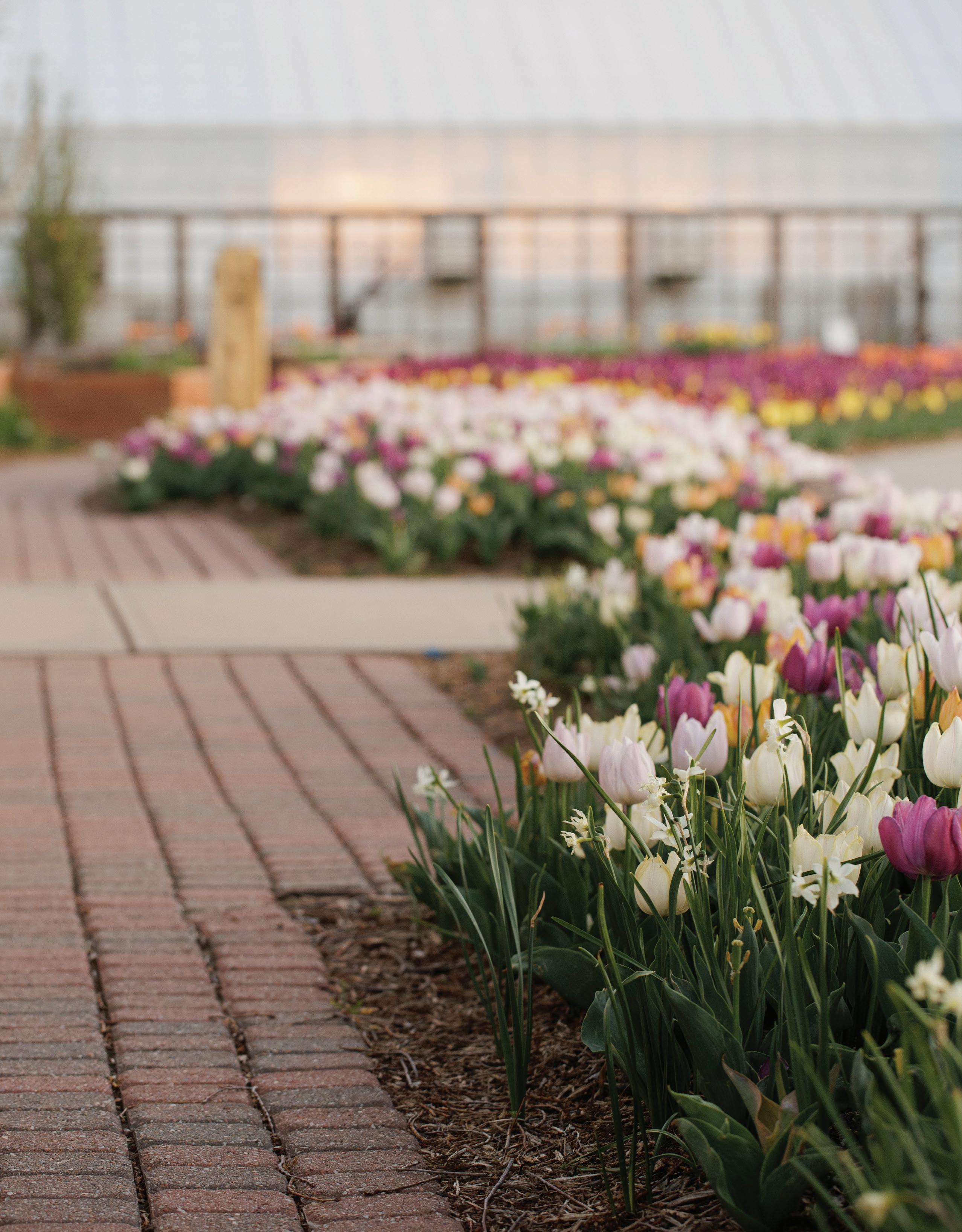 Photo by Amy Meng
Photo by Amy Meng
Taste of the Ville
June 1 | Aggieville Business District
PEO Chapter IL presents this annual event featuring over 20 restaurants from 4 p.m. to 6 p.m. Tickets are $20 per person.
manhattancvb.org/event/taste-of-theville/3416/
Island of Paradise Garden Party
June 7 | Kansas State Gardens
Help keep the K-State Gardens thriving with a fundraiser featuring food, drinks, live music, and more from 6:30 p.m. to 10 p.m. Tickets are $125 per person. k-state.edu/gardens/events/garden-party.html
MHK Juneteenth
June 13–19 | Various locations
Celebrate Black history and heritage at the annual MHK Juneteenth festival. manhattanjuneteenth.org
Freedom Fest
July 3–7 | Downtown Junction City
Celebrate America’s independence with this multiday festival featuring a carnival, live music, veterans’ ceremony and more. Visit online to view the master schedule in full detail. freedomfestjc.com
Shakespeare Camp
July 8–19 | Manhattan Arts Center
Manhattan Arts Center presents Camp Mac’s summer production of Shakespeare’s A Midsummer Night’s Dream directed by Penny Cullers. Performance on Friday, July 19 at 3 p.m. Cost is $198. Grades 1–9 are welcome. manhattanarts.org
Riley County Fair
July 25–29 | Riley County Fairgrounds
Enjoy the annual Riley County Fair, which features a variety of events, including the Kaw Valley Rodeo, livestock shows and a nightly carnival. rileycountyfair.com
Third Thursday
August 15 | Downtown MHK
Don’t miss Third Thursdays from May to October. This month’s theme is Midsummer Faire featuring artists painting en plein air, a rock-painting station, grab-n-go florals, paper lantern painting and release and more.
downtownmhk.com/event/third-thursdayaugust/
Slug “Run”
September 7 | Midwest Dream Car Collection
This 0.5k event (less than 1,000 steps) will benefit the kids of St. Jude Children’s Research Hospital. Runners will stop at three different food and drink stations along the way. Race begins at 10 a.m. manhattanrunningco.com/races
Sunset Zoo Free Day October 4 | A&H Farm
Enjoy a free day at A&H Farm with a Friends of Sunset Zoo membership. Hours are 1 p.m. to 5 p.m. Last admission is 30 minutes before close. aandhfarm.com/events
Turkey Trot November 28 | Aggieville
Manhattan Running Club presents the annual Turkey Trot on Thanksgiving. The race starts and finishes in the heart of Aggieville and meanders to downtown on Poyntz. Bring the whole family for a 5k before the feast. manhattanrunningco.com/races

Artist keeps ancient art form alive with fore-edge painting
 STORY BY Lucas Shivers
STORY BY Lucas Shivers

Hidden fore-edge paintings by Manhattan artist Brianna Marie Sprague offer a captivating glimpse into the intersection of art and literature, where hidden scenes from beloved stories come to life on the edges of books.
Sprague’s journey into this enchanting art form began nearly a decade ago. It started with a serendipitous encounter with a 17th-century book adorned with a stunning landscape painting in Kansas State University’s College of Architecture library.
“When my colleague excitedly pulled me into the special collections archive, I had no idea my life was about to change,” Sprague says. “She fanned the edges, and a beautiful landscape watercolor painting appeared. It was the closest thing to magic that I’ve ever experienced.”
Reflecting on the transformative moment that sparked her fascination with fore-edge painting, the initial encounter planted the seed for what would blossom into a lifelong passion and creative pursuit.
Sprague delves into the enchanting world professionally and unveils a rich history, often shrouded in obscurity.
Originating centuries ago, the art form emerged as a clandestine endeavor, adorning the edges of books with intricate illustrations that remained concealed from all but the most discerning eyes.
Historical records trace the roots of fore-edge painting back to medieval Europe, where monks and scribes sought to embellish sacred texts with ornate decorations. The early renditions, though rudimentary, laid the foundation for a tradition that would flourish over the centuries.
The style never truly vanished despite fading into obscurity during the 19th century, replaced by new forms of book decoration and the rise of industrial printing techniques.
In recent decades, a renewed interest in the centuries-old tradition resulted from the efforts of contemporary artists like Martin Frost and Sprague.
Growing up in rural Kansas, Sprague found her passion for art as a young person. Her mother was an artist, and her father was always reading and never said no to a trip to the library or buying a new book.
Art and literature were constants in her childhood. She continued her artistic pursuits at K-State and, in 2012, received a bachelor of fine arts degree specializing in oil painting. Working as a graphic designer, she continued building her creative pursuits and learning.
The tumultuous landscape of the Covid-19 pandemic provided Sprague with an unexpected opportunity to revisit her interest.
“During the pandemic, I kept thinking about the hidden fore-edge paintings,” she says.
The period of lockdown and isolation prompted a reevaluation of her artistic priorities. Sprague found solace in the timeless beauty of the paintings. She delved deeper into its history and technical nuances. Despite the scarcity of available resources and guidance, she remained undeterred, driven by curiosity and a desire to breathe new life into this centuries-old tradition.
Sprague navigated the intricate process and embarked on a journey of experimentation and self-discovery. She drew inspiration from both historical techniques and contemporary innovations. She honed her craft through countless hours and several years of trial and error.
“I experimented on my own to discover the correct water-to-paint ratio and what angles to clamp the book to create the illusion,” Sprague says.
She worked to shed light on the meticulous attention to detail required to achieve the desired effect. Sprague developed her technique and style, characterized by vibrant watercolor paintings that spring to life when the pages are fanned out.
Sprague approaches each fore-edge painting as a personal and collaborative endeavor. Working closely with clients, she crafts artwork that captures the essence of their favorite stories and cherished memories.
Clients Adam and Allgood Smith from Rhode Island recount the experience of receiving a personalized painting as a gift.


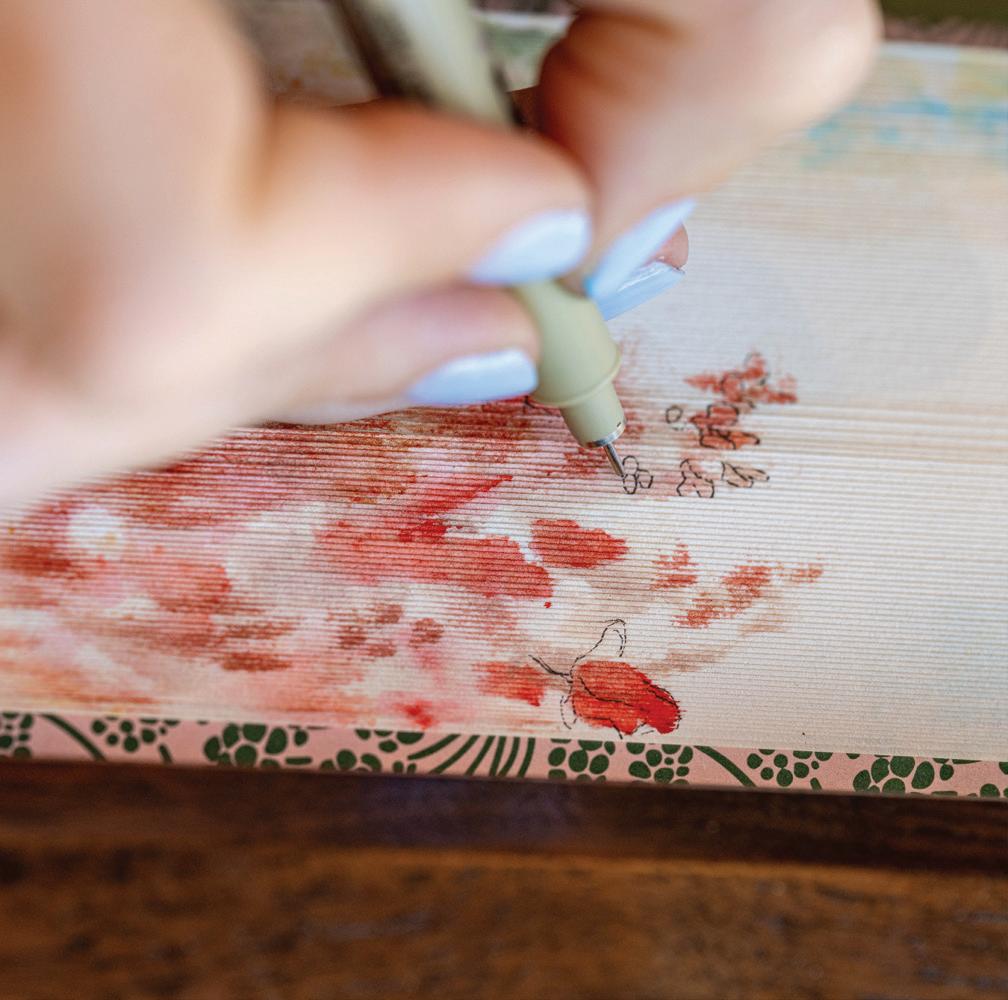
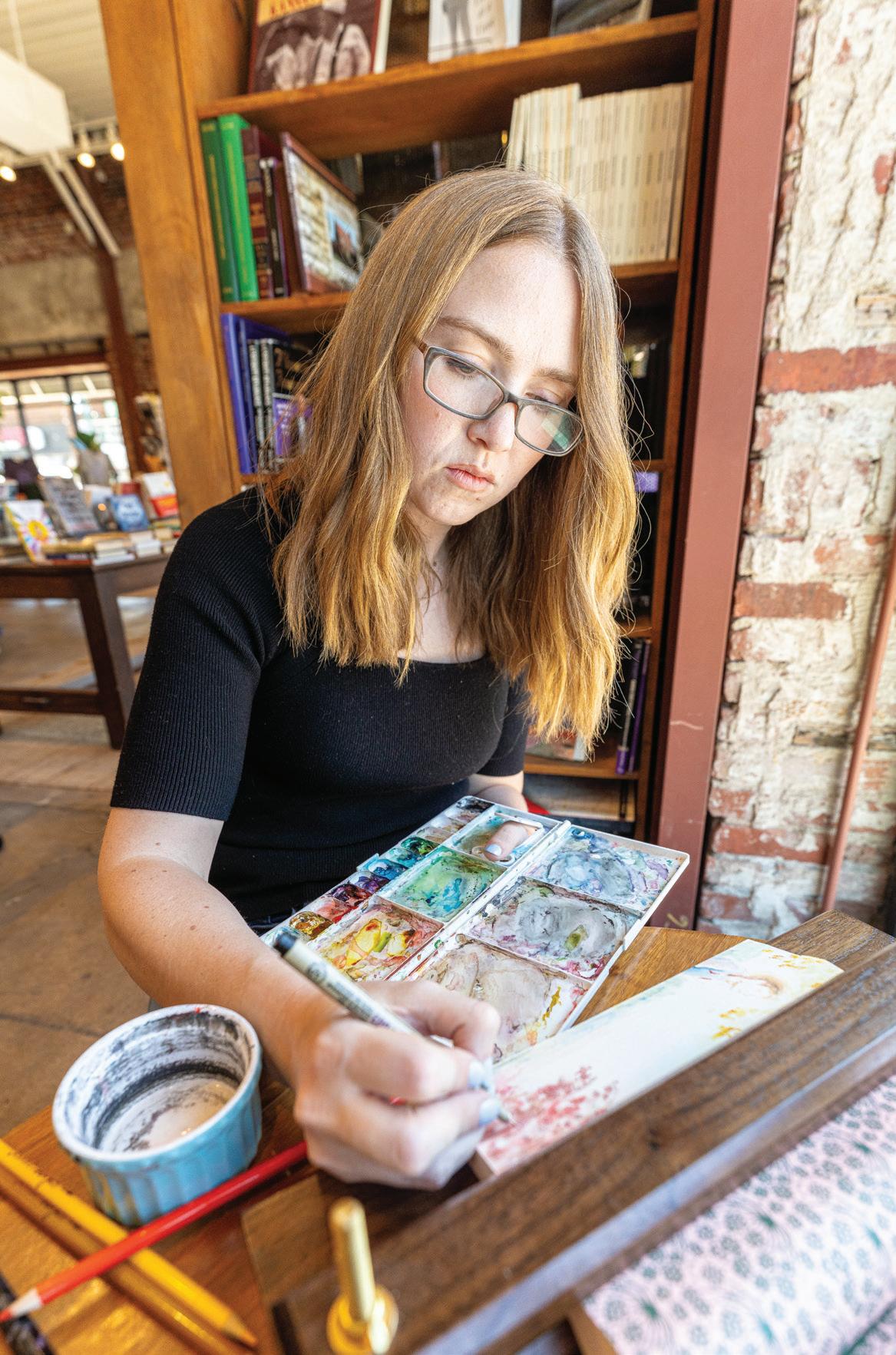

“I happened to see one of her designs on Facebook,” says Adam. “Our anniversary was coming up, so I thought it was a wonderful gift to support individual artists.”
The Smiths chose “Lord of the Rings” since they are big fans of the love story.
“Bri had some great suggestions for the work, and I gave her full creative license with a section from the book highlighting the relationship with quotes in elvish,” he says.
They checked in occasionally over several months to get the gift all set.
“The painting was gorgeous, and it’s entirely invisible until you hold it just right,” says Adam. “We have it in a place of honor on one of our dozen bookshelves.”
Testimonials underscore the emotional impact of Sprague’s work, which becomes a tangible manifestation of shared stories and connections.
Operating from her home studio in Manhattan, Sprague’s journey has been propelled by the power of social media, where she shares glimpses of her creative process and connects with a global audience.
With nearly 300,000 followers across various platforms, her art has garnered widespread acclaim and recognition, sparking renewed interest in the ancient tradition.
“I was shocked, we were all shocked, at the attention my videos were getting,” Sprague says. “Once I had my first one million–plus viewed video, I knew my life was going to be very different moving forward.”
Social media has spurred interest in collecting books with fore-edge painting. Sprague has inspired many artists to use their talent to pursue their dreams and hone their craft.
Sprague remains committed to preserving the rich legacy of this art form, ensuring that the hidden wonders continue to captivate and inspire future generations.
Sprague’s paintings share an allure of storytelling and the beauty found within the pages of a book.
Learn more on TikTok and Instagram under @brimariepaints, and on Etsy under BriMarieSells.
